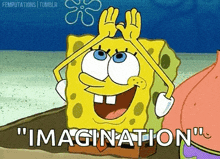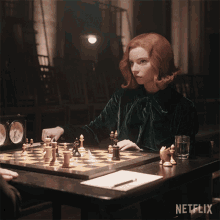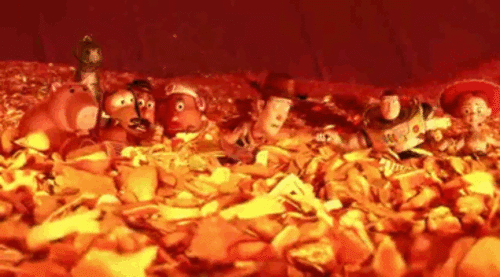Ok, what I’m about to say is going to sound trite. Boring. Cliche even. Analogue entertainment like books and board games requires the power of imagination to work.
That’s the cliche part. However I have a secret theory on why imagination works the way it does, why it’s a powerful and sticky force, and therefore why I think analogue will always stick around.
I stumbled on this insight playing a game of chess years ago. I remember the game was close, it was tense, it felt interesting, engaging, expansive. We notated the moves so we could go back and analyze a position if we wanted, and the game only lasted 28 moves.
Wait, 28? That means I only played 14 moves. That can’t be right, this game felt like it’s own world while I played, it was epic. My experience of the game felt way bigger than it actually was. And that was curious to me.
The insight is this: the game felt bigger to me, because it was bigger to me. For every move I made, I considered 2 or 3 or 5 other options. Then for each of those considerations I wondered what my opponent would do. If he moved here then I could do this or this, no that won’t work. What if I did this instead, then he might move here and I could counter with that. No no, he would take my piece in that case, I can’t do that. Or COULD I?
Every single move was a spiral of options, possibilities, that I considered and tinkered with internally. I played way more chess in my head than was represented on the board. That’s why it FELT like a much bigger experience. Because it actually was.
However, this isn’t a guaranteed trait of analogue. The magic is choice. Imagination is in the possibility. The things that aren’t yet, but could be. This is the code line that activates the super computer in your head. Choice. Options.
If you do a basic study of game design, you’ll see this as a recurring truism. Interesting player choice is THE THING that makes a good game. To break that down even further, the player needs a real choice, in other words a game can’t be a series of obvious decisions. Tic-tac-toe becomes boring when you realize there’s a perfect set of X’s or O’s: the first mover can always win.
Additionally the choice can’t be so opaque the player doesn’t understand the consequences. If I can’t imagine the short to long term implication of my actions, there’s no consideration needed. I may as well play randomly, at which point it’s not a game, it’s an activity.
The sweet spot is a series of interesting choices that aren’t obvious, I can IMAGINE the potential outcomes and meaningfully choose different things. But not so non-obvious I CAN’T imagine any outcomes so I just shuffle some pieces around like I’m blindly fumbling in the dark.
But I don’t think this principle applies only to games. Stories follow a similar structure, with perhaps some more nuance. I argue that a good story is also about interesting choices.
A story is boring when it’s predictable. I think the nuance is, the reader (or viewer) isn’t given interesting choices. The characters are given interesting choices, and the reader is given the opportunity to engage. They can imagine what the character would do when presented with an interesting choice, and consider the decision they made after. I’ll try and show you why the nuance matters.
One of my favorite movie going experiences of all time was watching Toy Story 3 in theaters. Warning: mild spoilers.
Woody, Buzz and crew find themselves at the climax of the movie in a dump yard, slowly slipping down a quicksand of trash towards an incinerator.
Now, you may be asking, “What’s the choice here?” The toys are stuck, the odds are insurmountable. They can’t do anything, right?
The interesting choice here, at this specific moment, is: “What do you do in the face of death?”
Do they keep crawling up the quagmire, refusing to give up until the very end? Do they give in to depression? Do they become hysterical? I think you could imagine at least a small list of how someone, or perhaps specifically Woody and the other characters, would respond in this situation. Because the toys are well developed characters, you can imagine, I’m sure, multiple different possibilities for each different toy. However, the toys make the choice to hold each others hand and go through whatever comes together (which is a running theme in the Toy Story series.)
But once that moment passed, and they made their choice, as the viewer my response was, “Wait, that can’t be the choice. They can’t die here, right?” I tried to imagine what was going to happen sitting in the theaters on that first viewing. And I couldn’t. And that was interesting. In stories I love trying to imagine what could happen, and then being wrong, but it still feeling right. The story isn’t obvious, it’s textured with a rich imagination space.
I won’t spoil how this scene ends, other then they do claw their way out of the jaws of defeat, and it’s perfect. (Because of course they can’t die. We have a franchise to continue!). When the scene ended, I thought, “Ah, I could have imagined that, but I didn’t. What a great story.”
There’s lots of directions I could run with this, talking about deus ex machina, or Chekov’s gun and how those fit into my little theory, but I’ll end with this:
Imagination is the art of possibility. Good art, whether it be a board game or story (or otherwise!) invites participation through interesting choices. And this participation (can, when done well) create something that’s much bigger, more expansive, than the thing itself.
As long as our brains can imagine things, stories and board games giving us interesting choices will always be able to compete with the AAA video games and youtube shorts.






